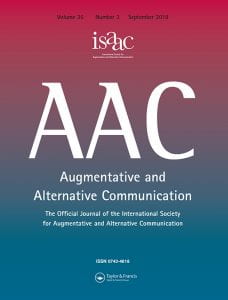Grant Blasko
Grant Blasko is a young adult nonspeaking autistic student and part of the Summit’s Organizing Committee. He is a University of Washington DO-IT Scholar, an active member of TASH’s National Communication Access Workgroup, and a CommunicationFIRST Advisory Council member. He has served as a stakeholder on panels guiding autism professionals at the American Occupational Therapy Association, CAST, and the International Society for Autism Research (INSAR).
Webcast Description
This presentation was first made at the Future of AAC Research Summit on May 13, 2024.
Please cite as
Blasko, G. (2024, May 13). Systemic social isolation of AAC users. [Conference session]. Future of AAC Research Summit, Arlington, VA. https://tinyurl.com/AAC-Blasko-2024
Video production by Rylie Mueller (Penn State University)
Additional Resources
Blasko, G. (2025). Unveiling underlying systemic isolation challenges for AAC users. Augmentative and Alternative Communication, 1–8. https://doi.org/10.1080/07434618.2025.2515279
Blasko, G. (2022). Thoughts from an Autistic AAC User After the April 2022 Meeting of the Interagency Autism Coordinating Committee. https://communicationfirst.org/thoughts-from-an-autistic-aac-user-after-the-april-2022-meeting-of-the-interagency-autism-coordinating-committee/
Blasko, G. (2022). Autism Acceptance … of Communication Stress? https://communicationfirst.org/autism-acceptance–of-communication-stress/
 McNaughton, D., & Light, J. (2013).
McNaughton, D., & Light, J. (2013).